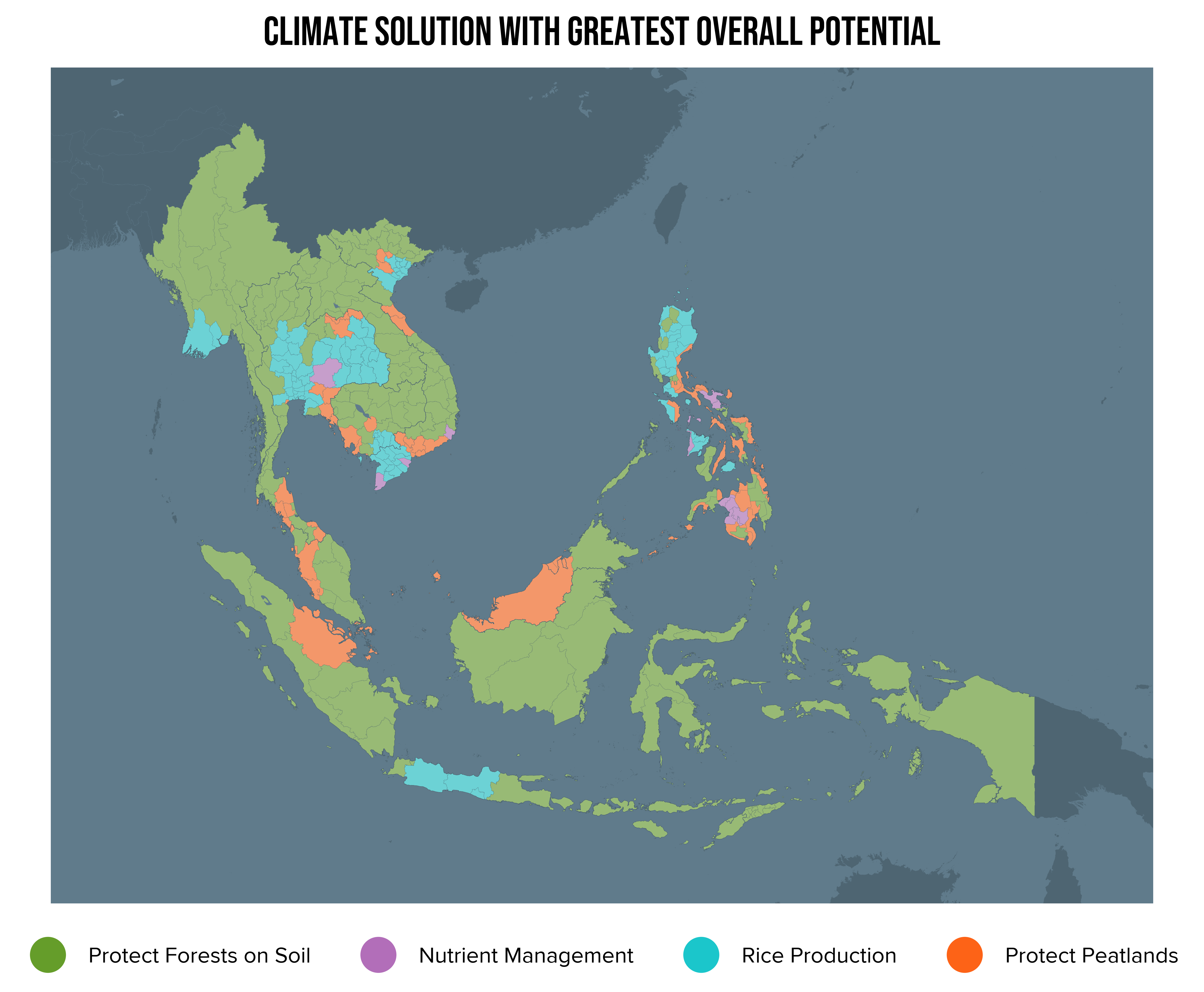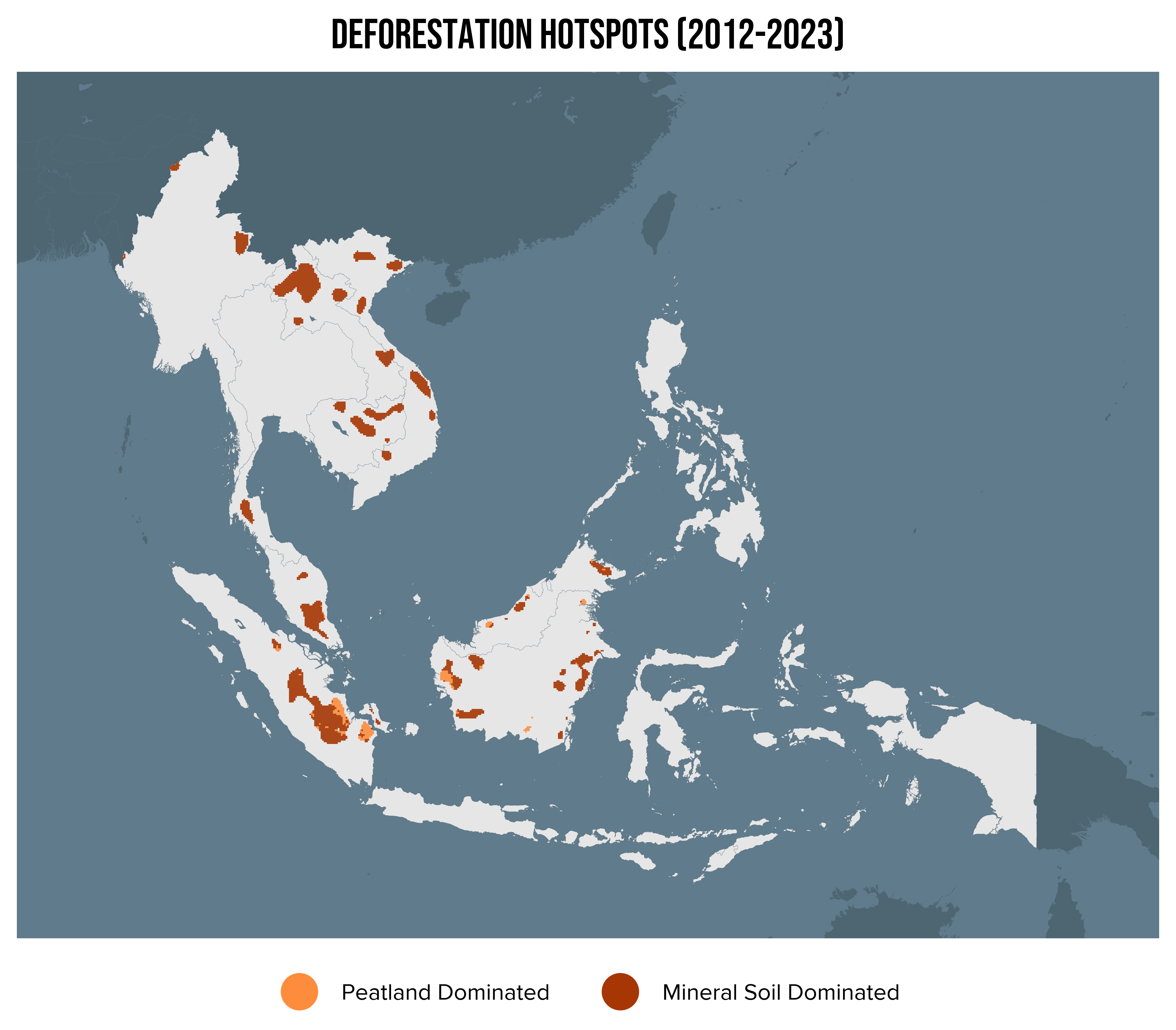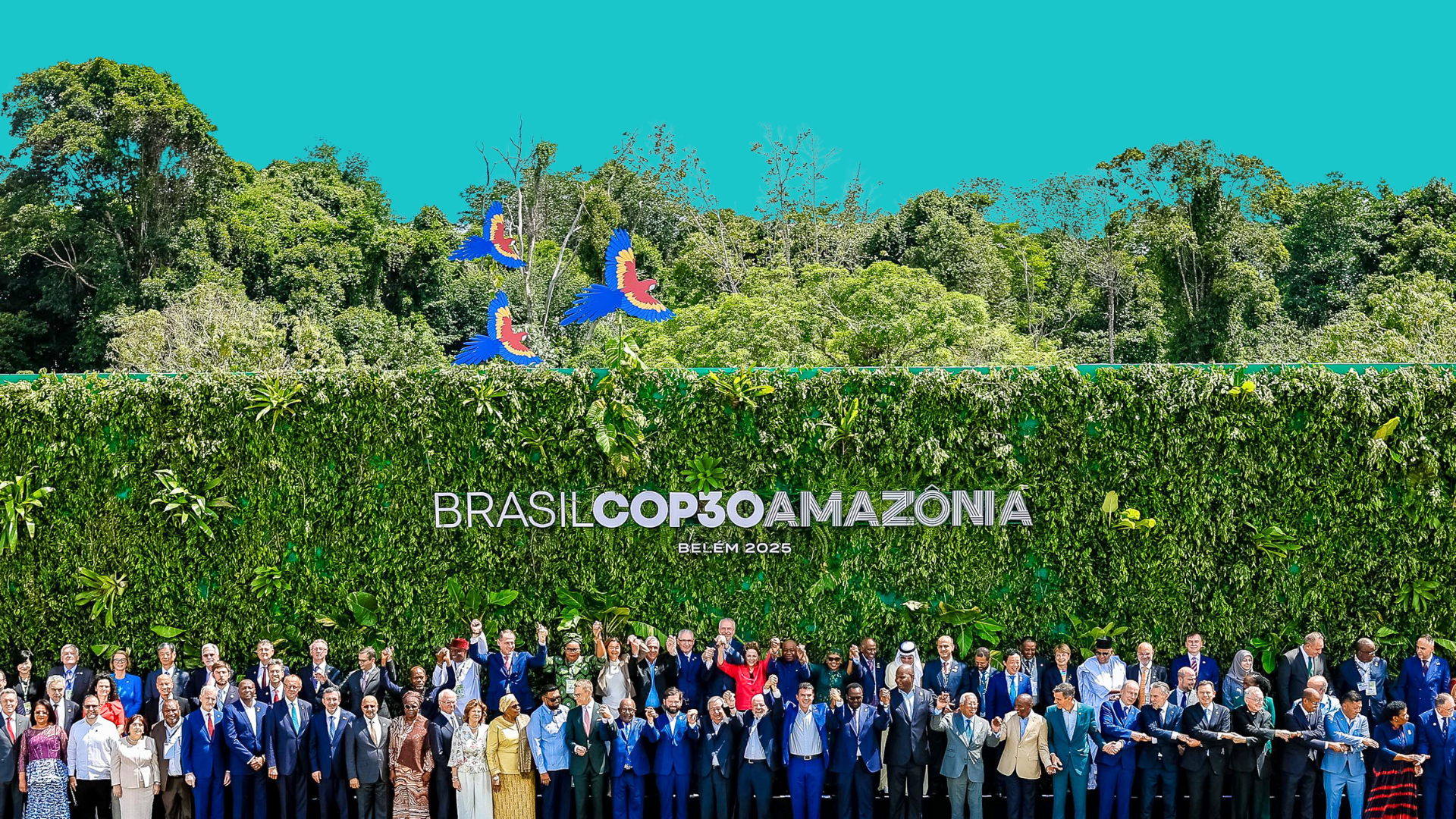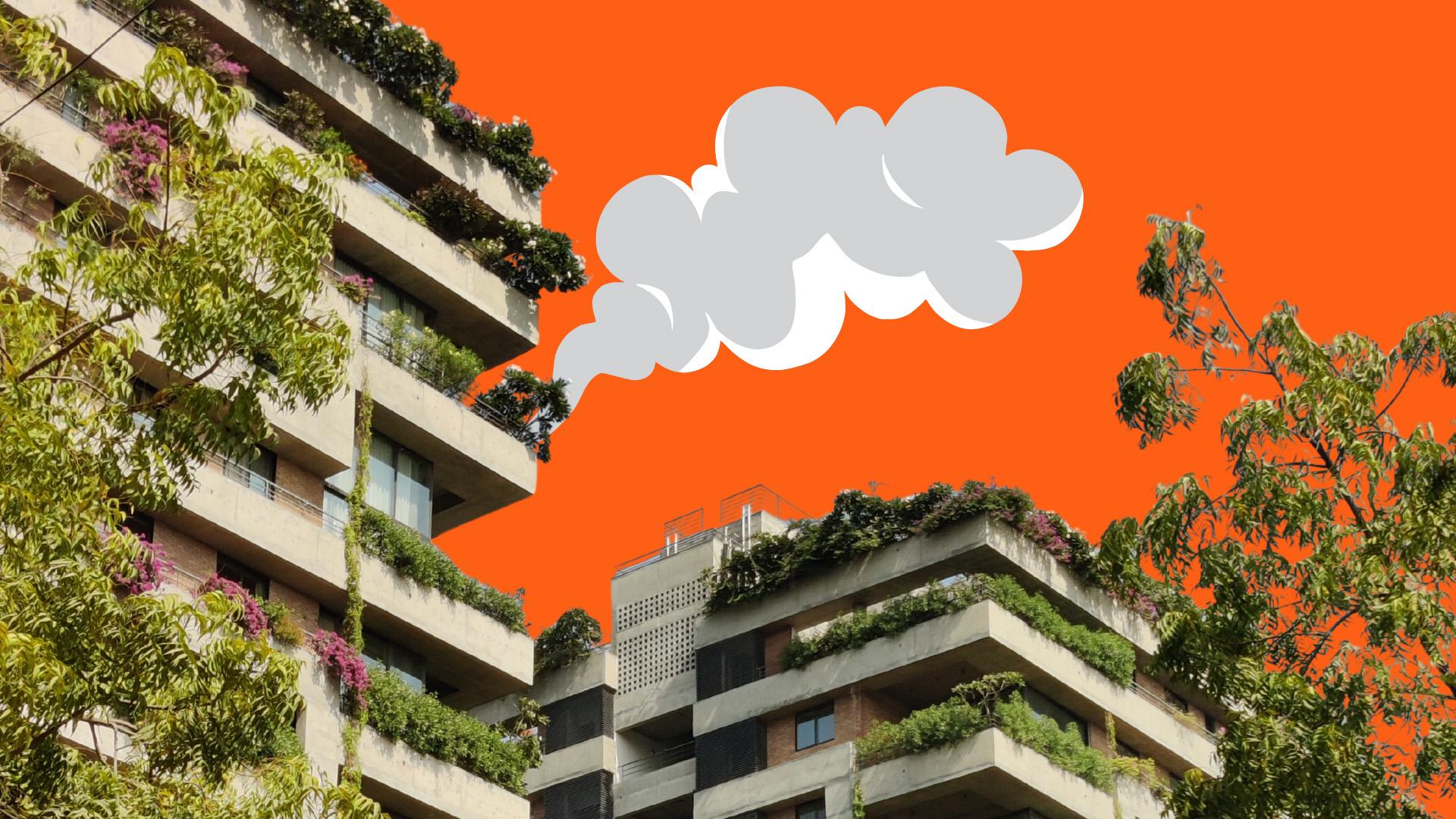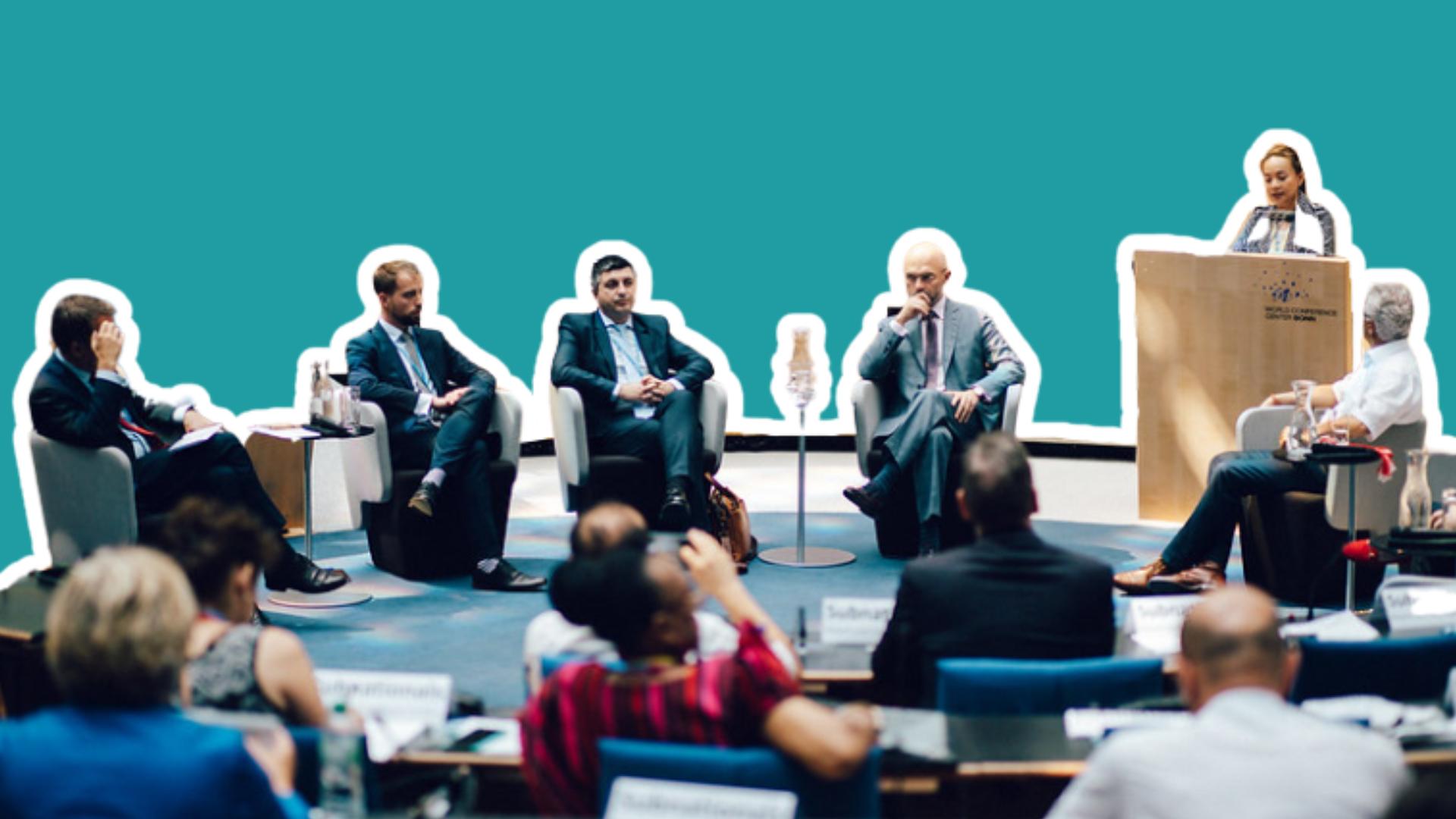At the same time, Southeast Asia is at greater risk of economic losses from climate change than other regions of the world. If climate change isn’t addressed, countries in the region are at risk of losing more than 35% of their gross domestic product due to changes to temperature, precipitation patterns, and natural hazards, with repercussions for agriculture and other key sectors.
In our new report, A Drawdown Roadmap for Food, Agriculture, and Land Use in Southeast Asia, we outline a science-based portfolio of actions – detailing exactly what is needed, when and where, to maximize the impact of climate action in the 11 countries in the region.
In the report, we analyze data from multiple sources to distill the most impactful climate solutions in different locations across the region. We highlight hotspots for immediate action – places that have disproportionately high emissions with the greatest potential for emissions reduction per land area. We found many instances of what we call “80:20 rules,” in which we could expect to get roughly 80% of the benefits – in this case, emissions reductions – by focusing on 20% of the area. Targeted interventions in these hotspots can yield the highest return on investment for investors, philanthropists, and other stakeholders looking to address climate change.
We found that protecting forests, mangroves, and peatlands has the greatest potential to reduce emissions in 76% of provinces across Southeast Asia. Using up-to-date satellite data, we highlighted the hotspots of deforestation and land use change over the past decade. Although forested peatlands cover a small area, emissions from their conversion are higher per hectare than forests on mineral soils.




